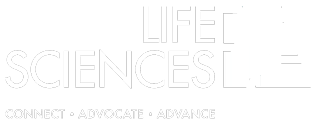 A Summary of Benefits and Coverage (SBC) must contain:
A Summary of Benefits and Coverage (SBC) must contain:
- Uniform definitions of standard insurance terms and medical terms (provided in the glossary)
- A description of the coverage for certain categories of benefits
- The exceptions, reductions, and limitations of the coverage
- The cost-sharing provisions of the coverage (deductible, coinsurance, and copayment obligations)
- A statement as to whether the plan offers minimum essential and minimum value coverage
- The renewability and continuation of coverage provisions
- Coverage examples
- A statement that the SBC is only a summary and that the plan document, policy, certificate, or contract of insurance should be consulted to determine the governing contractual provisions of the coverage
- Contact information for questions and obtaining a copy of the plan document or the insurance policy, certificate, or contract of insurance (such as a telephone number for customer service and an Internet address for obtaining a copy of the plan document or the insurance policy, certificate, or contract of insurance)
- For plans and issuers that maintain one or more networks of providers, an Internet address (or similar contact information) for obtaining a list of network providers
- For plans and issuers that use a formulary in providing prescription drug coverage, an Internet address (or similar contact information) for obtaining information on prescription drug coverage
- An Internet address for obtaining the uniform glossary, a contact phone number to obtain a paper copy of the uniform glossary, and a disclosure that paper copies are available
Important: The agencies have issued very specific instructions on how to complete the SBC. If you are completing an SBC, you need to read and follow the instructions. The instructions are available at http://www.dol.gov/ebsa/pdf/SBCInstructionsGroup.pdf.
Since these instructions were issued, the DOL has made a few liberalizations. They are:
- If a plan’s terms deviate significantly from the template or instructions, you may modify the template/entries to the extent needed to be accurate
- You only need to include the footer on the first and last page and the header only needs to be on the first page
- When completing the header, either the company name, any insurer name or the plan name can be listed first
- If there are multiple plan options, list the name commonly used; if there is no common name, a generic name is fine
In addition, for 2014 and 2015 employers and carriers may address the prohibition on annual dollar limits for essential health benefits by either:
- Deleting the row that asks about annual limits; or
- Completing the annual limits question with “no” and stating in the “Why It Matters” column: “The chart starting on page 2 describes any limits on what the plan will pay for specific covered services, such as office visits.”
A blank SBC to use with 2014 and 2015 plan years is at http://www.dol.gov/ebsa/correctedsbctemplate2.doc.
A sample completed SBC for 2014 and 2015 is at http://www.dol.gov/ebsa/pdf/CorrectedSampleCompletedSBC2.pdf.
What do you do if you have multiple benefit options? Dental or vision benefits? HRA or HSA? EAP or wellness program?
For these answers and additional information on completing the coverage examples, providing the glossary, distribution, language requirements and more, Download a copy of UBA’s “Summary of Benefits and Coverage FAQs” at: http://ubabenefits.sites.hubspot.com/summary-of-benefits-and-coverage-faqs





